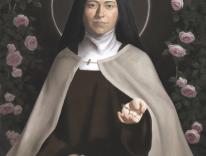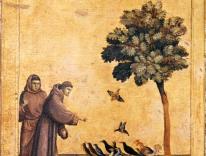Catholics with long memories know the pre-Vatican II parish “mission.” On for two or three weeks, it had a portion for children, a week exclusively for women, another for men alone. Segregated assemblies, presided over by several visiting priests, included daily Mass, lengthy confessional queues, and many sermons-one or more fueled by sulfuric hellfire.
In Catholic Revivalism (1978), Notre Dame history professor Jay Dolan traced the origin of the mission to the 1830s, as a response to what bishops of the time considered to be lax practices on the part of Catholic immigrants. By 1900, the pattern for parish missions was firmly established.
Familiar through the middle decades of the twentieth century, the mission is a less certain part of the parish calendar today. Yet among twenty-first-century Paulists (a group long active in mission work) is Fr. James DiLuzio, designer of a mission/retreat that is a decided departure from the long-entrenched format.
Actor by training and background, DiLuzio originated his new-style mission five years ago with Luke Live! In it, DiLuzio dramatizes the first fifteen chapters of the Gospel of Luke. Yet Luke Live! isn’t pure performance. In morning and evening sessions over several days, DiLuzio addresses: why Luke, who Luke is, and what Luke is up to. Conversing with people in the pews, DiLuzio elicits responses to questions like who is Theophilus, the addressee of Luke’s Gospel. He locates the Jesus story in a time when Romans and Greeks were becoming disillusioned with their classical gods, and he discusses their contemporary stumbling blocks to conversion.
After outlining the church’s traditional understanding of Luke, DiLuzio allows: “A lot of modern scholars don’t believe a word of what I’ve said.” Still, he sees the logic that led the church fathers to the conclusions they made about Luke: “The issue is not who wrote the Gospel, but what it says. It makes sense on a very human level.” DiLuzio’s reason for dramatizing this Gospel: “Luke gives great attention to the Holy Spirit-a foundational theme that continues to affirm the Holy Spirit through you and me.”
In Luke Live!, DiLuzio draws his audience into the oral tradition-the earliest versions of the Christ story. Delivering the text extemporaneously, he is Christ and all the other voices. But spoken word is not the only actor’s skill DiLuzio brings: movement can be just as much a part of the telling. Prone at the base of the altar, one arm stretched full-length to attract the Lord’s attention, he is the paralytic on his mat. There’s nothing static about Luke Live!
Priest and congregants engage in another integral part of this parish mission, music. A gifted singer, DiLuzio lends his rich tenor to both hymns and secular songs (Springsteen, Sondheim), but a high point of Luke Live! is a score of his own composition. Echoing synagogue chants, his rendition of Luke’s genealogy of Jesus is undoubtedly the most engaging recital of that portion of the Gospel ever heard.
In Luke Live2!, DiLuzio renders the latter chapters of the Gospel. Within the short span of his new direction in ministry, he has fashioned a dozen other dramatic monologues. They feature Old Testament prophets Elijah, Elisha, and Isaiah; apostles Peter, James, and John; Latin-American saints; African saints-among others.
In one of DiLuzio’s exchanges with a Vermont congregation (where I encountered him last fall), the actor-priest inquired whether his listeners liked the format. After a positive response, he admitted that not everyone does. But parishioners at St. Paul’s in Manchester Center were enthusiastic enough to invite him back for Luke Live2! in 2008.
Please email comments to [email protected] and join the conversation on our Facebook page.
Share
Previous Story
Moving the Soil
Next Story
The Boston Globe Shouts "Viva" ... Sorta (Update)

